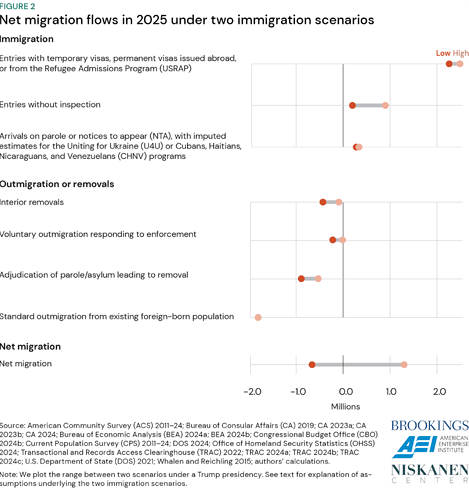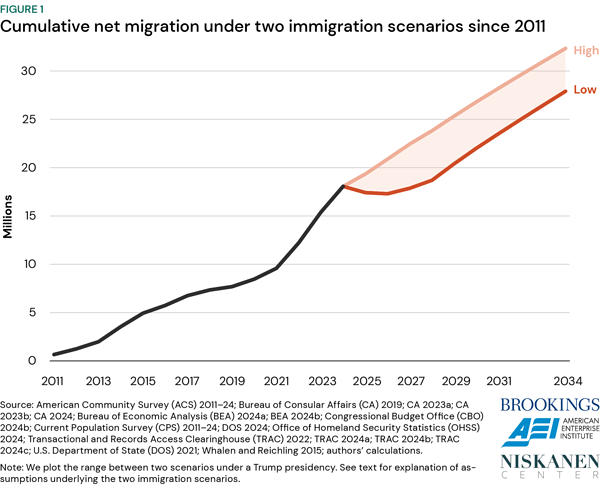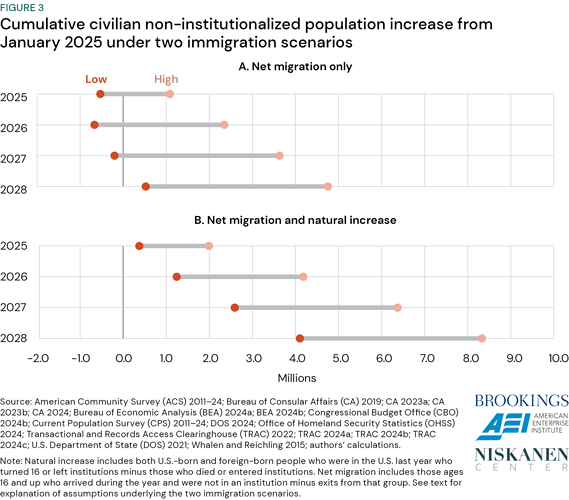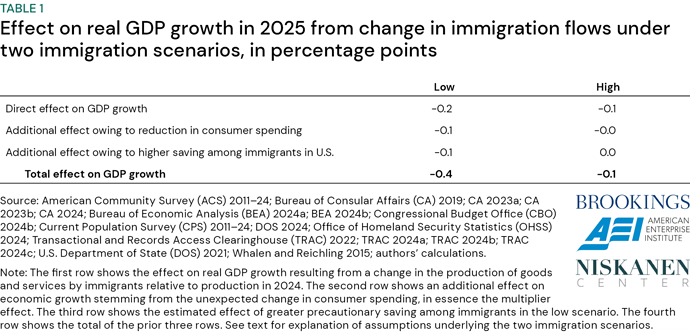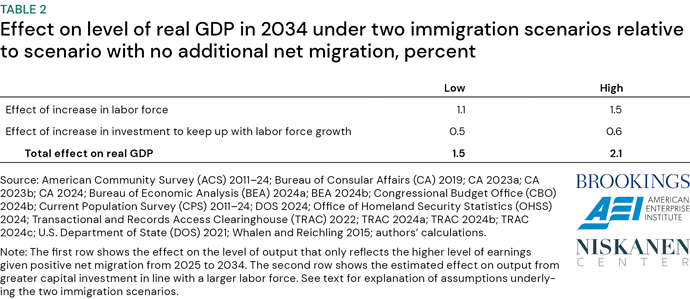Immigration Policy Scenarios
These are immigration scenarios from Brookings
- High-Immigration Scenario:
- Assumes immigration levels close to those during Trump’s first term (2017–2019) and reflects a moderate enforcement approach.
- Net migration projected at +1.3 million in 2025, with cumulative net migration of 5.8 million over four years.
- More immigrants contribute to labor force growth, consumption, and economic output.
- Low-Immigration Scenario:
- Involves stricter policies, including reduced legal immigration and increased deportations.
- Net migration projected at -650,000 in 2025, with cumulative net migration of 630,000 over four years.
- Reflects significant disruptions, including outmigration exceeding inflows in the early years.
Economic Impacts
In the “low” scenario, the cumulative increase in the civilian non-institutionalized population over age 16 is 4 million people through 2028 versus 8 million in the “high” scenario.
- GDP Growth:
- Immigration contributes to labor force growth, driving productivity and output.
- High Scenario: Reduces 2025 GDP growth by 0.1 percentage points compared to 2024 due to slower immigrant-driven growth.
- Low Scenario: Reduces GDP growth by 0.4 percentage points due to a sharp contraction in the labor force and related output.
- Consumer Spending:
- Fewer immigrants lead to reduced aggregate demand, as immigrants tend to spend on housing, goods, and services.
- Businesses may cut production and investment in response, dampening economic momentum further.
- Inflationary Pressures:
- A reduced labor force could increase labor costs, raising prices for services like agriculture and caregiving.
- However, lower demand could suppress inflation for other goods, leading to modest net effects on inflation.
- Labor Market:
- Slower immigration leads to fewer workers, stalling labor force growth and potentially reducing monthly employment gains by 100,000 jobs in 2025 under the low scenario.
- Long-Term Effects:
- Over the decade, cumulative immigration contributes to a larger labor force, higher GDP, and greater capital investment under the high scenario.
- By 2034, GDP is projected to be 2.1% higher under the high scenario compared to a no-net-immigration baseline, versus 1.5% higher in the low scenario
